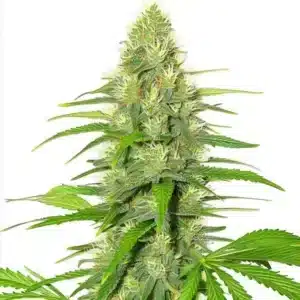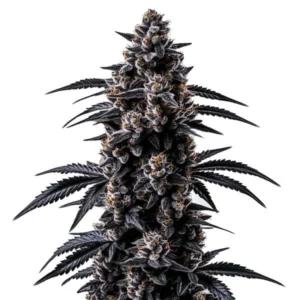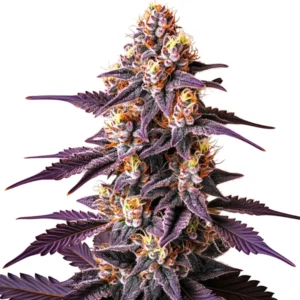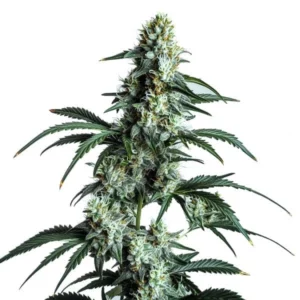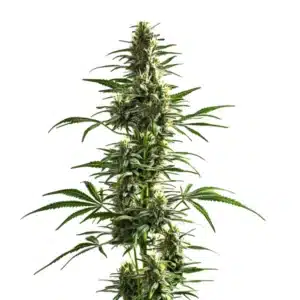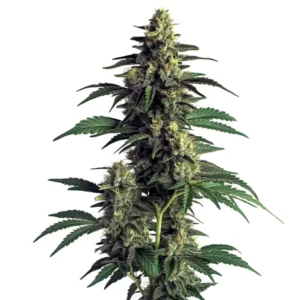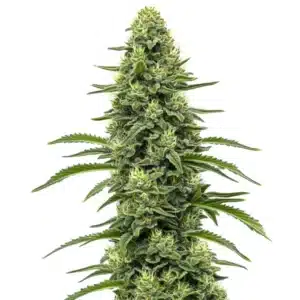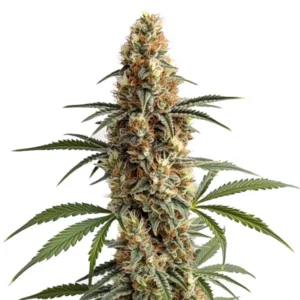
Terpene Profiles and Aroma Intensity
Terpene profiles and aroma intensity are two fascinating aspects of cannabis that both new and seasoned growers love to explore. Terpenes are aromatic compounds found in many plants, including cannabis, responsible for the unique smell and flavor of each strain. The aroma intensity of a cannabis plant is directly linked to its terpene concentration.
Think of terpenes as the essential oils of cannabis. They not only give each strain its distinct scent but also influence the overall experience. The effects of terpenes on aroma intensity can vary greatly. Some strains have subtle scents, while others boast bold, pungent aromas.
Recommended Strains
GG4
|
|
THC | 27% (High) |
|
|
Type | Feminized |
|
|
Yield | High |
|
|
Phenotype | 40% Indica / 60% Sativa |
White Widow
|
|
THC | 18% - 25% (Medium) |
|
|
Type | Feminized |
|
|
Yield | High |
|
|
Phenotype | 45% Indica / 55% Sativa |
For those diving into cannabis cultivation or consumption, learning about terpene profiles in cannabis strains can enhance your appreciation of this versatile plant. By analyzing terpene profiles for aroma, you can better predict the scent and experience of different strains.
Terpene Profiles in Cannabis Strains
When it comes to terpene profiles in cannabis strains, the diversity is immense. Every strain holds a unique combination of terpenes that sets it apart. For example, Blimburn Seeds offers strains like Blue Dream, known for its sweet, berry-like fragrance, driven by terpenes such as myrcene and pinene.
Another popular strain, Gorilla Glue 4, showcases a mix of earthy and acidic aromas. This is due to its unique terpene profile, which includes caryophyllene, known for its spicy, peppery scent. By examining different strains, you can gain insight into how these compounds affect aroma intensity and the overall experience.
Terpene profiles in cannabis strains are not just about scent but also about the interplay of various terpenes that contribute to the plant’s therapeutic properties. Some growers and consumers seek out specific profiles for their potential health benefits, such as anti-inflammatory or anti-anxiety effects. This makes understanding terpene profiles a valuable tool in selecting strains that meet both sensory and therapeutic preferences.
Besides to their aromatic contributions, terpenes play a role in the entourage effect, where they synergistically interact with cannabinoids to enhance or modify the effects of cannabis. This means that by understanding and choosing specific terpene profiles in cannabis strains, users can tailor their experiences not only in terms of aroma but also in the effects they wish to achieve.
Aroma Intensity and Terpene Concentration
Aroma intensity and terpene concentration go hand in hand. The more concentrated the terpenes, the stronger the aroma. A strain like White Widow from Blimburn Seeds demonstrates a potent blend of earthy and woody scents, thanks to its high terpene concentration.
In practical terms, when you grow a strain with high terpene concentration, expect a robust aroma that fills the room. This can be thrilling for those who appreciate the sensory richness of cannabis. It’s not just about the smell; it’s about creating an experience that engages the senses.
Knowing aroma intensity and terpene concentration is crucial for those looking to maximize the sensory appeal of their cannabis. By focusing on strains with high terpene concentrations, growers can ensure that their harvests not only smell great but also provide a more immersive experience. This focus can lead to better consumer satisfaction and potentially higher market value for their products.
Beyond cultivation, terpene concentration also affects how cannabis products are perceived by consumers. Products with higher aroma intensity often stand out on the shelf, attracting customers who prioritize aromatic richness. This highlights the importance of terpene profiles and aroma intensity in the commercial cannabis industry, where sensory appeal can significantly influence purchasing decisions.
Promos & Deals
Effects of Terpenes on Aroma Intensity
Terpenes do more than just add scent to cannabis. They enhance the overall aroma intensity, making each strain distinct. Consider strains like Sour Diesel, where the terpenes contribute to its unique fuel-like scent, creating an unforgettable experience.
It’s important to note that not all terpenes are equal in aroma potency. Some, like limonene, are vibrant and citrusy, enhancing the freshness of a strain. Others, like linalool, offer a more subdued, floral aroma. This diversity allows cannabis enthusiasts to find strains that match their personal scent preferences.
The effects of terpenes on aroma intensity also extend to how they interact with other aromatic compounds present in cannabis. This interaction can create layers of complexity in the scent profile, offering a more nuanced experience. Enthusiasts often explore different strains to discover these intricate scent combinations, enhancing their appreciation of cannabis diversity.
Moreover, the effects of terpenes on aroma intensity can influence user perception and preference. Some users may be drawn to the bold, sharp aromas of certain terpenes, while others may prefer the subtle and soothing scents of others. This variation highlights the importance of offering a wide range of terpene profiles to cater to diverse consumer preferences.

Analyzing Terpene Profiles for Aroma
When analyzing terpene profiles for aroma, you’ll find that certain terpenes dominate specific strains. For instance, the terpene myrcene is often found in strains with musky, earthy aromas, like those from the Blimburn Seeds collection.
By familiarizing yourself with these dominant terpenes, you can better predict the aromatic experience of a strain before even opening the package. This is particularly useful when selecting seeds for cultivation, as it allows you to tailor your growing projects to your preferred scents.
Analyzing terpene profiles for aroma involves more than just identifying dominant terpenes. It requires understanding how these compounds interact to create a harmonious scent profile. This knowledge can guide growers in selecting strains that not only match their desired aroma but also enhance the overall sensory experience.
Furthermore, analyzing terpene profiles for aroma can aid in the development of new strains with tailored scent characteristics. By cross-breeding plants with complementary terpene profiles, breeders can create unique strains that offer novel aromatic experiences. This process of terpene profiles and scent enhancement is at the forefront of cannabis innovation, continually expanding the possibilities for consumers.
Practical Tips for Enhancing Aroma Intensity
For growers looking to enhance aroma intensity, focusing on the terpene profiles of their plants is key. Start by selecting strains known for their rich terpene concentrations, such as those available from Blimburn Seeds. These strains are bred for their potent aromas and can provide a satisfying sensory experience.
Once you’ve chosen your strains, consider the growing environment. Factors like soil quality, lighting, and humidity can all influence terpene production. Keeping these elements in balance will help maximize the aromatic potential of your plants.
Practical tips for enhancing aroma intensity also include careful attention to post-harvest processes. Proper drying and curing techniques are essential to preserving terpene profiles and maintaining aroma intensity. These steps ensure that the final product retains its full aromatic potential, providing a rich sensory experience for consumers.
Additionally, incorporating organic cultivation practices can enhance terpene profiles and aroma intensity. Organic growing methods often result in healthier plants that produce more robust terpene profiles, leading to stronger aromas. This approach not only benefits the environment but also enhances the quality and appeal of the final product.
Real-Life Examples of Aroma Intensity
Imagine walking into a room filled with the scent of freshly picked oranges. This is what you might experience with a strain high in limonene. This terpene, found in strains like Lemon Haze Diesel, offers a bright, citrusy aroma that’s both invigorating and refreshing.
On the other hand, if you prefer a more calming, floral scent, a strain with high levels of linalool, such as Lavender, might be more your style. This terpene provides a soothing aroma that can create a relaxed atmosphere, perfect for unwinding.
Real-life examples of aroma intensity also include the rich, earthy tones of strains high in myrcene. This terpene, commonly found in strains like Northern Lights, offers a grounding aroma that many users find comforting and familiar. Such examples illustrate the diverse range of experiences available through different terpene profiles.
Another example is the sharp, piney scent of pinene-rich strains like Jack Herer. This terpene not only enhances aroma intensity but also contributes to a refreshing and energizing experience, showcasing the powerful influence of terpene profiles on the overall sensory journey.

FAQs about Terpene Profiles and Aroma Intensity
What are terpenes, and how do they affect aroma?
Terpenes are organic compounds found in many plants, including cannabis. They are responsible for the distinct aromas and flavors of each strain. In cannabis, terpenes contribute to aroma intensity by providing a wide range of scents, from fruity and floral to earthy and spicy.
These compounds not only enhance the aromatic profile of a strain but also interact with cannabinoids to influence the overall experience. By selecting strains with specific terpene profiles, you can tailor the aroma and effects to your preferences.
Knowing the effects of terpenes on aroma intensity is essential for appreciating the full spectrum of cannabis flavors. Each terpene contributes unique characteristics to the scent profile, creating a diverse array of aromatic experiences. This diversity allows users to explore and discover strains that align with their personal preferences.
Besides to aroma, terpenes play a role in the therapeutic effects of cannabis. Certain terpene profiles are associated with specific health benefits, such as relaxation or alertness. Exploring these profiles can lead to a more customized and potentially beneficial cannabis experience, enhancing both aroma intensity and overall enjoyment.
How can I maximize aroma intensity in my cannabis plants?
Maximizing aroma intensity involves several key factors. Start by choosing strains known for their rich terpene profiles, like those from Blimburn Seeds. These strains are bred for their aromatic potential and can provide a robust sensory experience.
Besides to selecting the right strains, focus on optimizing your growing environment. Pay attention to soil quality, lighting, and humidity levels, as these can all influence terpene production. Proper curing and storage techniques also play a crucial role in preserving aroma intensity.
To further enhance aroma intensity, consider implementing techniques such as low-stress training (LST) and defoliation. These methods can improve light penetration and airflow, promoting healthier growth and potentially increasing terpene production. By incorporating these practices, you can optimize both the quality and aroma of your harvest.
Additionally, using natural fertilizers and supplements can boost plant health and terpene profiles. Products rich in essential nutrients support robust growth and can enhance the aromatic qualities of your cannabis. This approach not only maximizes aroma intensity but also contributes to a more sustainable and eco-friendly growing process.
Why do different strains have unique aromas?
Different strains have unique aromas due to their distinct terpene profiles. Each strain contains a unique combination of terpenes, which contributes to its specific scent and flavor. For example, a strain high in the terpene limonene will have a citrusy aroma, while one high in myrcene might smell earthy and musky.
This diversity allows for a wide range of aromatic experiences, catering to various preferences. By exploring different strains, you can discover the scents that most appeal to you and enhance your cannabis experience.
The variability in terpene profiles among cannabis strains is influenced by genetics, environmental factors, and cultivation practices. This complexity results in a rich tapestry of scents, offering limitless opportunities for exploration. Enthusiasts can delve into the world of cannabis aromas, uncovering new favorites and expanding their sensory horizons.
Beyond personal preference, the unique aromas of different strains also play a role in their market appeal. Strains with distinct and memorable scents often garner more attention and can become sought-after by consumers. This highlights the importance of understanding and harnessing terpene profiles to create standout cannabis products.
Can the growing environment affect terpene profiles?
Yes, the growing environment can significantly impact terpene profiles. Factors such as soil quality, light exposure, and humidity levels can influence terpene production in cannabis plants. For optimal aroma intensity, it’s important to create an environment that supports healthy terpene development.
Growers can experiment with different growing conditions to see how they affect the terpene profiles of their plants. By optimizing these factors, you can enhance the aroma and flavor of your cannabis, resulting in a more satisfying harvest.
Environmental factors such as temperature and nutrient availability also play a crucial role in terpene development. Maintaining optimal conditions throughout the plant’s life cycle can lead to more pronounced terpene profiles and aroma intensity. This attention to detail can elevate the quality of the final product, providing a richer sensory experience.
In addition to environmental factors, the timing of harvest can influence terpene profiles. Harvesting at peak maturity ensures that terpenes are at their most concentrated, maximizing aroma intensity. This consideration is vital for growers aiming to produce cannabis with superior aromatic and flavor characteristics.
What is the relationship between aroma intensity and terpene concentration?
Aroma intensity is directly linked to terpene concentration. The higher the concentration of terpenes in a strain, the more intense its aroma will be. Strains with high terpene concentrations, such as those from Blimburn Seeds, are known for their potent scents.
Knowing this relationship can help you select strains that match your desired aromatic experience. By focusing on terpene concentration, whether through cultivation or selection, you can enjoy cannabis strains with the aroma intensity that best suits your preferences.
The relationship between aroma intensity and terpene concentration also extends to the quality and longevity of the scent. High terpene concentrations not only enhance immediate aroma intensity but also contribute to the persistence of the scent over time. This can lead to a more enduring and pleasurable experience for users.
Moreover, terpene concentration is an indicator of the plant’s health and vigor. Robust terpene profiles often reflect optimal growing conditions, resulting in a superior product. This underscores the importance of prioritizing terpene concentration in cultivation practices to achieve the best possible aroma intensity and overall cannabis quality.



